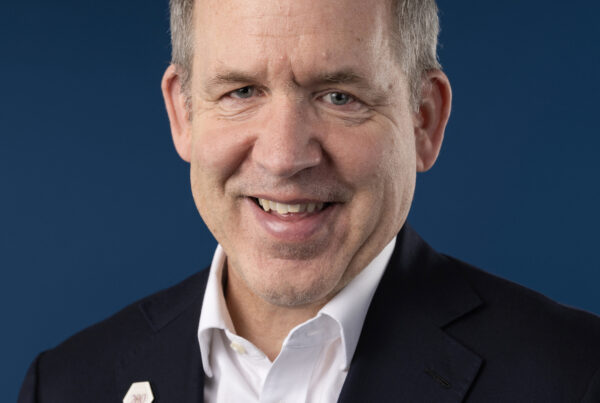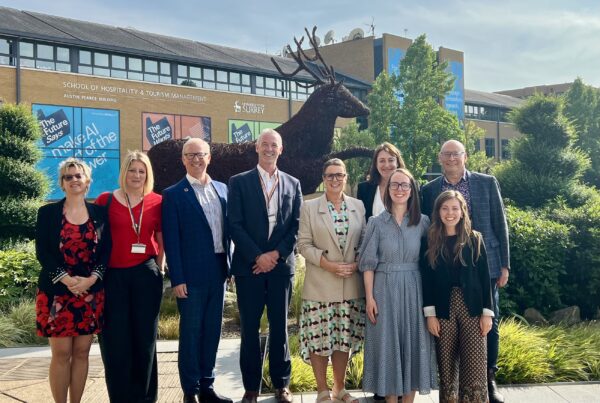Getting to innovation as usual

Author: Martin Betts | As seen in Campus Review
When times are tough, one of the best coping strategies is to leave the past behind, move out of your current predicament, and focus on the horizon ahead.
All of us are trying to look ahead right now. Our ability to see very far ahead is hard when so many days bring such disruptive changes. The plight of south-east Queensland universities over the last few weeks illustrates this only too well.
The first week of the second semester for many in the 11 Local Government Areas (LGAs) around Brisbane was a time of relative optimism. Staff and students were back on campus. Course plans for face-to-face delivery were all being interactively briefed to and discussed with students. Graduation ceremonies were being scheduled and registered for.
Long standing plans and efforts for the open day season were being polished. We were waiting to welcome the next cohort of applicants to vibrant social learning environments, as the image we wanted them to have of us, in making their future study decisions. We dared to look ahead to 2032 for a day or two, and our premier telling the world we were “beautiful one day, perfect the next” felt so right.
And then everything changed again. All SEQ universities, and their wider communities, were back into full lockdown within a week. We converted everything back to online mode. We postponed graduation ceremonies and other events again, and switched some of our open days to online showcases as a proxy for promises of hoped for future campus experiences. I really feel for all the staff who had invested so much time, effort and emotional energy in all of those plans.
The second week of classes became the same poorly attended Zoom sessions we ended first semester with. In the worst cases, they would have seen frustrated talking heads over powerpoint slides of bullet points, with little student interaction. I really feel for all the staff and students who continue to have little choice other than to endure all of this. It is likely that we will find out in the end of year student experience surveys that our students are not enjoying being served what staff are not enjoying serving them.
How is this serving any of us? What serves us all best right now, in looking ahead, is accepting that each day will see change and that developing underlying capacity for agility and innovation is the best preparation we can all make. I have heard a colleague describe our two current modes of operation as either business as usual (BAU) or lockdown as usual. The lockdown lifted again on Sunday and a switch back to BAU mode was invoked. How do we get from here to a mode of innovation as usual instead?
We can’t go on hoping that we can go back to pre-pandemic, normal campus operations. We could invest our efforts into what we are going to do differently for the long-term. There is an expression that resonates with me that calls on us to make the choice, to take the chance, to change our lives. How many of us are choosing that over being stuck and hoping?
The mass and rapid moves online in 2020 created great innovative capacity for all of us. What have we done with it since? What did we learn? We are still going to need to replace lost international fee revenue to fund research long term. Where will it come from?
I see promise in observing some universities that are starting to target significant new revenue streams from various new activities and sources. Microcredential products, offered to new lifelong learning and corporate markets, offer real promise. But the suggestions from some quarters that research commercialisation will replace all lost international student fee revenue appears misguided.
Corporate partners look to universities for talent and skills and are likely to continue to do so. It is likely to be in new, different and more flexible ways that we reposition for. But fewer Australian partners look to universities for research to the same extent. This is partly because they are mostly SMEs. They mostly don’t have a R&D culture and the current mismatch of language, timeframes, culture, expectations and drivers are major barriers. We are yet to build a ubiquitous and visible prevailing environment in our universities based on new products, new services and new business models. But we can get there.
We will need an innovation culture in our universities like this if we are to look ahead with clarity to ways that we can replace lost revenue streams. A specialist isolated R&D commercialisation unit, locked away from the rest of the university, will not deliver what we need.
I have a clear view of the benefit of establishing a university-wide innovation culture, capacity and capability. And in aligning that with the reality of our partners, their innovative capacity, and what they now look to us for. An innovation agenda in universities would allow new models of online and lifelong learning, in partnerships with learners and other providers, and with technology companies. It is a clear opportunity. We need leaders with strategies, and an appetite for risk, that build cultures to innovate into these areas. My thoughts are with all of those leaders as they strive to get clear of intermittent lockdowns, and all the work that generates. But they need to if they are to thrive in the deep blue oceans beneath the choppy waters of now.
While we can’t look too far ahead with certainty, we do need clarity of where we are heading. It is a perfect time for new strategies relevant to context. We will need to have leaders that get it, partners that get us, and a culture and skills that make it happen. Many of these issues were prominent in our HEDx podcast interview with VC Alex Zelinsky of Newcastle University last week that you can accesshere. He described the drivers behind their new strategy called Looking Ahead.
It is almost a year now that we have been hoping for normality to be returned to us. We are yet to hear clear examples of innovation being deployed and celebrated for breaking the mould and generating new revenue and success. At HEDx we are looking ahead with our partners that are choosing to take chances to drive change. It will need bold leaders, disruptive strategies, innovation culture and new ideas.
And it will need for us to go beyond holding out hope that things will get better on their own. It’s time for innovation as usual.







